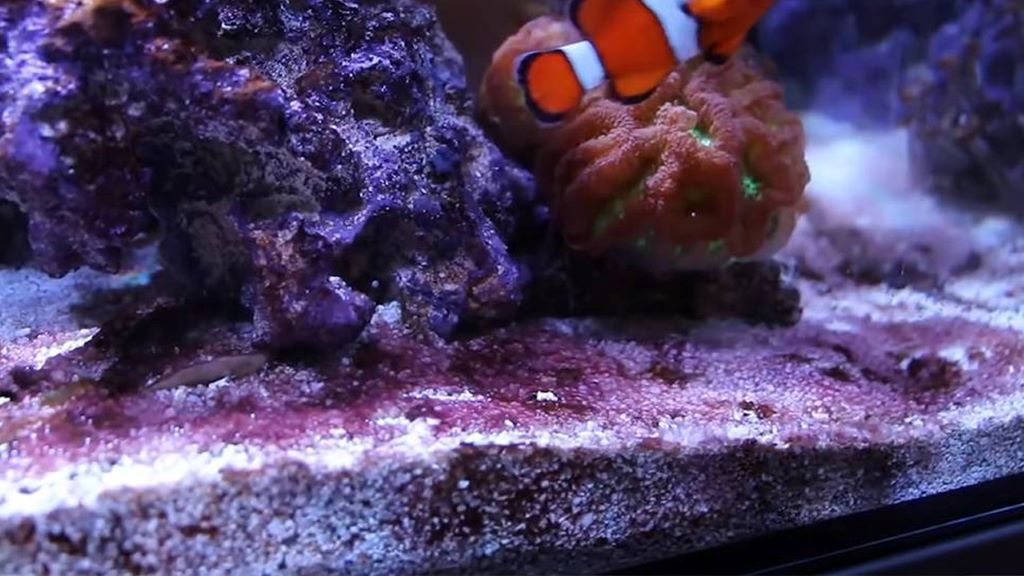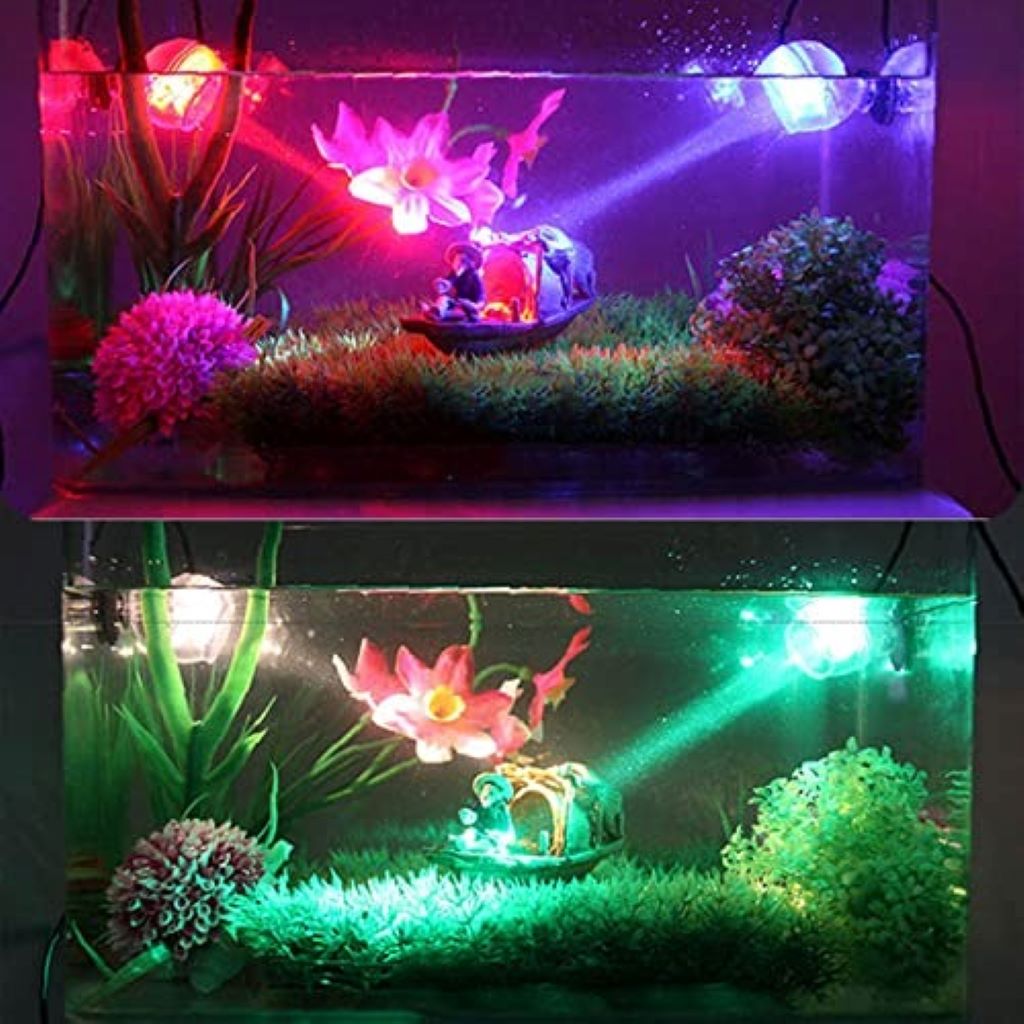The vibrant world of a reef aquarium is a captivating spectacle, a microcosm of the ocean’s beauty teeming with life and color. Among the most striking inhabitants are red algae, their crimson hues adding depth and complexity to the aquascape. But cultivating these stunning macroalgae requires a nuanced understanding of their specific needs, particularly when it comes to lighting. This comprehensive guide delves into the fascinating interplay between light spectrum and red algae growth, equipping you with the knowledge to illuminate your underwater garden and foster a thriving ecosystem.
Decoding the Light Requirements of Red Algae
Unlike their green counterparts, red algae have evolved to thrive in deeper waters, where light penetration is limited and the spectral composition shifts towards the blue end. This adaptation is reflected in their unique photosynthetic pigments, phycoerythrin and phycocyanin, which efficiently absorb blue and green light. To successfully cultivate red algae in your aquarium, you need to replicate these conditions by providing a lighting spectrum rich in these wavelengths.
Key Wavelengths for Red Algae Growth:
- Blue Light (420-490 nm): Essential for photosynthesis and chlorophyll production, blue light promotes healthy growth and vibrant coloration in red algae.
- Green Light (495-570 nm): While less efficient than blue light, green light is still absorbed by phycoerythrin and contributes to overall growth.
Wavelengths to Minimize:
- Red Light (620-750 nm): Red light is poorly absorbed by red algae and can even hinder their growth by promoting the proliferation of nuisance algae like green hair algae.
Choosing the Right Aquarium Lighting for Red Algae
The market is flooded with aquarium lighting options, each boasting unique features and spectral outputs. Navigating this landscape can be daunting, but understanding the specific needs of red algae can simplify your decision. Here’s a breakdown of popular lighting technologies and their suitability for red algae cultivation:
- LED Lighting: LEDs offer unparalleled control over spectral output, allowing you to fine-tune the light spectrum to perfectly match the needs of red algae. Look for fixtures with a high proportion of blue and green LEDs, and consider models with adjustable color channels for further customization.
Pros:
- Energy efficiency: LEDs consume less energy than traditional lighting options, reducing operating costs.
- Longevity: LEDs have a long lifespan, minimizing the need for frequent replacements.
- Minimal heat output: LEDs generate less heat, reducing the risk of overheating your aquarium.
- Spectral control: Allows for precise customization of the light spectrum.
Cons:
- Initial cost: High-quality LED fixtures can be expensive.
- Complexity: Some models may have complex controls and programming options.
- T5 Fluorescent Lighting: T5s are a popular and affordable option, offering a good balance of performance and value. While they don’t offer the same level of spectral control as LEDs, you can find bulbs specifically designed for marine aquariums with enhanced blue and green output.
Pros:
- Affordability: T5 fixtures are generally less expensive than LEDs.
- Wide availability: T5 bulbs are readily available in a variety of sizes and spectral outputs.
Cons:
- Lower energy efficiency: T5s consume more energy than LEDs.
- Shorter lifespan: T5 bulbs need to be replaced more frequently than LEDs.
- Heat output: T5s generate more heat than LEDs.
- Limited spectral control: Offers less flexibility in customizing the light spectrum.
- Metal Halide Lighting: Once the gold standard for reef aquariums, metal halides are now less common due to their high energy consumption and heat output. While they can provide the intense light required by some red algae species, they are not the most efficient or practical option for most setups.
Pros:
- High intensity: Provides strong light penetration for deep aquariums.
Cons:
- High energy consumption: Metal halides are energy-intensive, leading to higher operating costs.
- Significant heat output: Generates a lot of heat, requiring additional cooling measures.
- Limited spectral control: Offers less flexibility in customizing the light spectrum compared to LEDs.
Optimizing Your Aquarium Setup for Red Algae

Choosing the right lighting is crucial, but it’s only one piece of the puzzle. To create an environment where red algae can truly flourish, you need to consider other factors that influence their growth:
-
Water Parameters:
- Nutrient Levels: Red algae thrive in nutrient-rich water. Maintain adequate levels of nitrates, phosphates, and other essential nutrients through regular water changes and targeted fertilization.
- Alkalinity and pH: Maintain stable alkalinity (7-11 dKH) and pH (8.1-8.4) levels to support healthy growth.
- Water Flow: Moderate water flow ensures efficient nutrient delivery and prevents stagnation.
-
Aquascaping:
- Placement: Position red algae in areas with moderate to low light intensity, avoiding direct exposure to strong light.
- Substrate: Provide a stable substrate, such as live rock or rubble, for attachment.
-
Algae Management:
- Competition: Control the growth of nuisance algae, such as green hair algae, which can outcompete red algae for resources.
- Grazing: Introduce herbivorous invertebrates, such as snails and urchins, to help control algae growth and prevent overgrowth.
Reviewing Popular Aquarium Lighting Options for Red Algae
- AI Prime 16HD LED: This popular LED fixture offers a wide range of customizable color channels, allowing you to fine-tune the spectrum for optimal red algae growth. Its compact size and sleek design make it suitable for a variety of aquarium sizes.
Pros: Excellent spectral control, compact design, wireless control.
Cons: Can be expensive for larger tanks.
- Fluval Sea Marine & Reef LED: This affordable LED fixture provides a balanced spectrum with enhanced blue and green output, promoting healthy growth and vibrant coloration in red algae. Its simple controls make it easy to use, even for beginners.
Pros: Affordable, good spectral output, easy to use.
Cons: Limited color control compared to higher-end models.
- ATI Sunpower T5: This high-quality T5 fixture offers excellent performance and reliability. Choose bulbs with a high blue and green output for optimal red algae growth.
Pros: Powerful output, reliable performance, wide range of bulb options.
Cons: Higher energy consumption than LEDs, generates more heat.
How to Install LED Reef Aquarium Lighting: A Comprehensive Guide
Addressing Common Concerns and FAQs
-
Can I grow red algae under white light?
While some red algae species can tolerate white light, they won’t achieve their full potential in terms of growth and coloration. White light contains a significant amount of red light, which can hinder their growth and promote the growth of nuisance algae.
-
How long should I illuminate my red algae?
A photoperiod of 8-10 hours is generally sufficient for most red algae species. However, it’s essential to observe your algae and adjust the lighting duration based on their response.
-
Why is my red algae turning brown or green?
Several factors can cause discoloration in red algae, including:
- Insufficient light: Increase the intensity of blue and green light.
- Nutrient deficiency: Ensure adequate levels of nitrates, phosphates, and other essential nutrients.
- Excessive red light: Reduce the amount of red light in the spectrum.
- Algae competition: Control the growth of nuisance algae.
-
Can I use a combination of different lighting technologies?
Yes, you can combine different lighting technologies to achieve the desired spectrum and intensity. For example, you can use a combination of LED and T5 lighting to provide both targeted spectral output and overall illumination.
-
How do I prevent algae overgrowth in my red algae refugium?
Regular maintenance, including water changes, nutrient control, and algae removal, is crucial to prevent overgrowth. Introducing herbivorous invertebrates can also help control algae populations.
Cultivating a Thriving Red Algae Ecosystem
Growing red algae in your aquarium is a rewarding endeavor, adding a touch of the ocean’s magic to your home. By understanding their unique lighting requirements and optimizing your aquarium setup, you can create a thriving ecosystem where these crimson jewels flourish. Remember to observe your algae closely, adjust your approach as needed, and enjoy the beauty of this captivating underwater world.
Read More:
Aquarium Light Safety Precautions to Prevent Electrical Shock: A Comprehensive Guide
Lighting Up Your Reef Tank: A Deep Dive into the World of Aquarium Illumination




